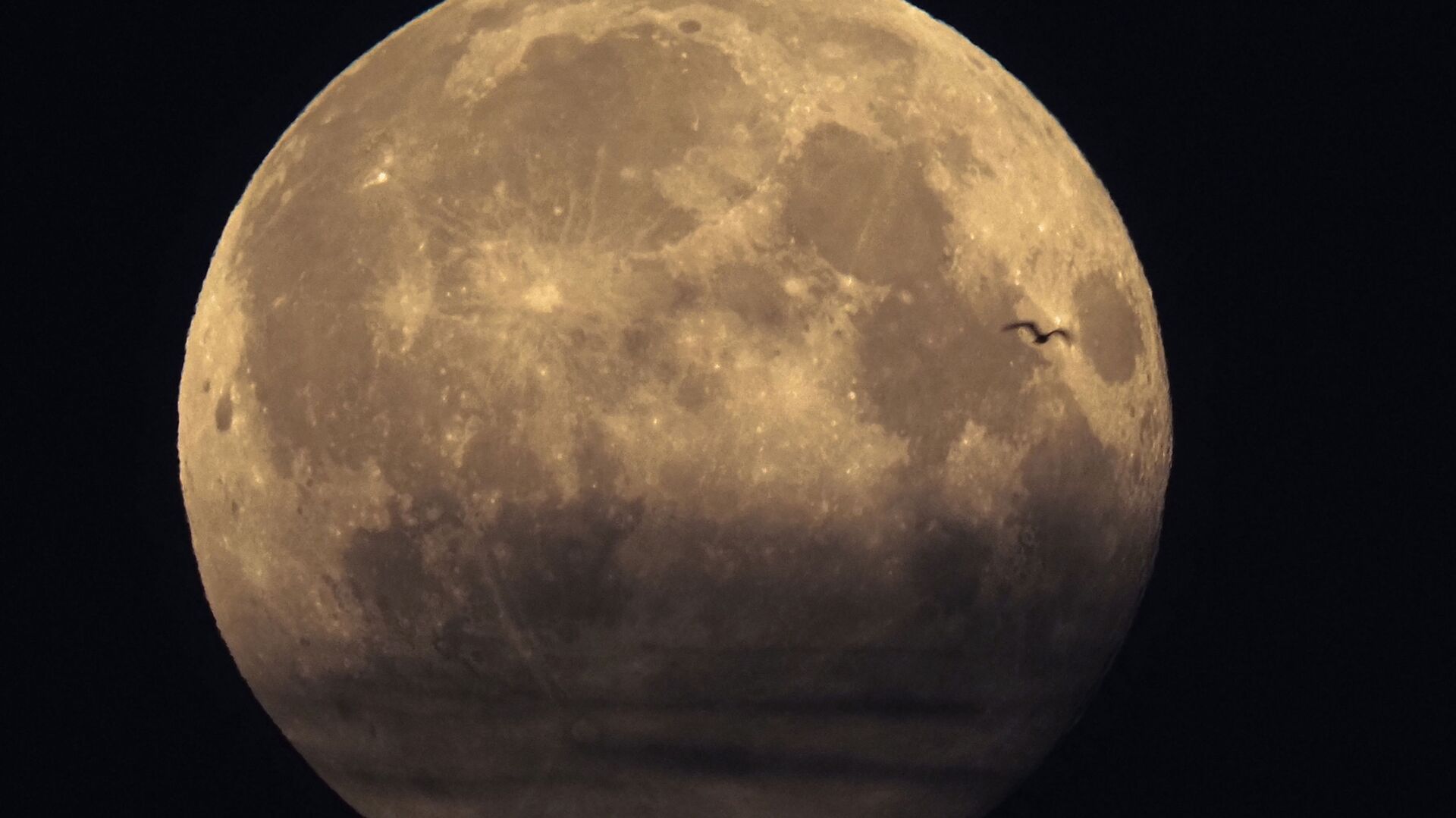https://sputnikglobe.com/20221006/moon-formed-in-mere-hours-after-catastrophic-collision-of-planets-new-study-suggests-1101576747.html
Moon Formed in Mere Hours After Catastrophic Collision of Planets, New Study Suggests
Moon Formed in Mere Hours After Catastrophic Collision of Planets, New Study Suggests
Sputnik International
For almost five decades, astronomers have believed that the Moon was created after Earth collided with a protoplanet called Theia. However, a new model has... 06.10.2022, Sputnik International
2022-10-06T14:32+0000
2022-10-06T14:32+0000
2022-11-03T19:33+0000
science & tech
moon
earth
https://cdn1.img.sputnikglobe.com/img/07e5/04/10/1082650838_0:175:2809:1755_1920x0_80_0_0_81f987209486ae7804b13b0b2d95c265.jpg
A new hypothesis based on cutting-edge supercomputer simulations has concluded that the Moon may have been formed in mere hours. The paper, published in The Astrophysical Journal Letters, suggests that it was formed immediately after the protoplanet Theia crashed into our planet.Scholars began unraveling the secrets of the Moon after the 1969 Apollo 11 mission brought a considerable amount of lunar rock and dust to Earth, allowing scientists to analyze them. The research showed that the moon was formed around 4.5 billion years ago, around 150 million years after the formation of the solar system itself.The conventional hypothesis was that Theia was shattered into tiny pieces after it collided with our planet, mingling into a disk along with Earth rocks. Then, the molten sphere of the Moon coalesced around it and cooled over millions of years.The authors of the new research used a computer program called SPH With Inter-dependent Fine-grained Tasking (SWIFT) to simulate the event in hundreds of possible options.When they scaled up the resolution, the simulation provided results showing that the Moon formed in a matter of hours after a piece of Earth was ejected into orbit.However, the scientists noted that they would have to examine rock and dust samples excavated from deep beneath the Moon's surface to create a better model - which may be possible if NASA's future Artemis missions are successful.
earth
Sputnik International
feedback@sputniknews.com
+74956456601
MIA „Rosiya Segodnya“
2022
Evgeny Mikhaylov
https://cdn1.img.sputnikglobe.com/img/07e4/09/07/1080390164_0:0:1440:1440_100x100_80_0_0_46c187f2ab0908f86849a7d09a7def57.jpg
Evgeny Mikhaylov
https://cdn1.img.sputnikglobe.com/img/07e4/09/07/1080390164_0:0:1440:1440_100x100_80_0_0_46c187f2ab0908f86849a7d09a7def57.jpg
News
en_EN
Sputnik International
feedback@sputniknews.com
+74956456601
MIA „Rosiya Segodnya“
Sputnik International
feedback@sputniknews.com
+74956456601
MIA „Rosiya Segodnya“
Evgeny Mikhaylov
https://cdn1.img.sputnikglobe.com/img/07e4/09/07/1080390164_0:0:1440:1440_100x100_80_0_0_46c187f2ab0908f86849a7d09a7def57.jpg
science & tech, moon, earth
science & tech, moon, earth
Moon Formed in Mere Hours After Catastrophic Collision of Planets, New Study Suggests
14:32 GMT 06.10.2022 (Updated: 19:33 GMT 03.11.2022) For almost five decades, astronomers have believed that the Moon was created after Earth collided with a protoplanet called Theia. However, a new model has shed light on exactly how this may have happened.
A new hypothesis based on cutting-edge supercomputer simulations has concluded that the Moon may have been formed in mere hours. The paper, published in
The Astrophysical Journal Letters, suggests that it was formed immediately after the protoplanet Theia crashed into our planet.
"What we have learnt is that it is very hard to predict how much resolution you need to simulate these violent and complex collisions reliably – you simply have to keep testing until you find that increasing the resolution even further stops making a difference to the answer you get," Jacob Kegerreis, a computational cosmologist at Durham University in England, told the press.
Scholars began unraveling the secrets of the Moon after the 1969 Apollo 11 mission brought a considerable amount of lunar rock and dust to Earth, allowing scientists to analyze them. The research showed that the moon was formed around 4.5 billion years ago, around 150 million years after the formation of the solar system itself.
The conventional hypothesis was that Theia was shattered into tiny pieces after it collided with our planet, mingling into a disk along with Earth rocks. Then, the molten sphere of the Moon coalesced around it and cooled over millions of years.
The authors of the new research used a computer program called SPH With Inter-dependent Fine-grained Tasking (SWIFT) to simulate the event in hundreds of possible options.
When they scaled up the resolution, the simulation provided results showing that the Moon formed in a matter of hours after a piece of Earth was ejected into orbit.
However, the scientists noted that they would have to examine rock and dust samples excavated from deep beneath the Moon's surface to create a better model - which may be possible if
NASA's future Artemis missions are successful.
"Even more samples from the surface of the Moon could be extremely helpful for making new and more confident discoveries about the Moon's composition and evolution, which we can then trace back to model simulations like ours," Kegerreis said.




